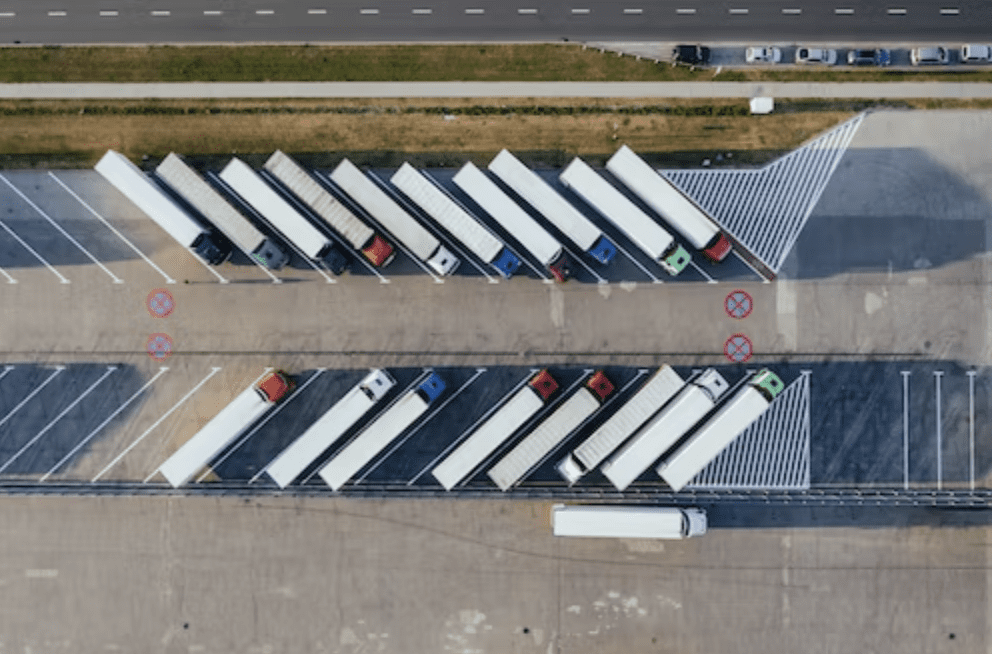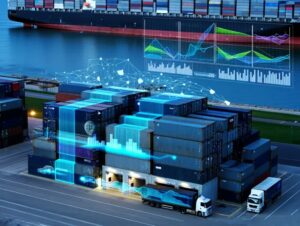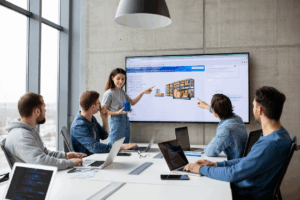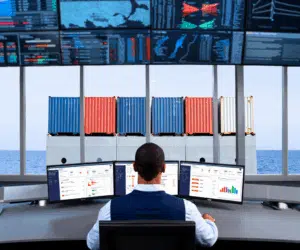Key Takeaways
- Predictive analytics can help companies make better decisions, reduce costs, and improve customer satisfaction in transportation and logistics.
- The evolution of technology has enabled more advanced predictive analytics tools, such as real-time predictive analytics and machine learning.
- Technology advancements have made predictive analytics more accessible than ever, which will continue to play a more vital role in enhancing the efficiency and quality of products and services across numerous industries.
Introduction
The transportation and logistics industry has always been heavily reliant on data to make informed business decisions. However, with the rise of predictive analytics, transportation and logistics companies can now use data to anticipate future outcomes and optimize their operations for greater efficiency and profitability.
In this blog, we will explore the evolution of predictive analytics in transportation and logistics, from its early beginnings to its current state, and how it is transforming the industry.
Early Developments in Predictive Analytics for Transportation and Logistics
The earliest forms of predictive analytics in logistics were focused on improving route optimization and delivery times. Transportation companies used data to map out the most efficient routes and predict when shipments would arrive at their destination. This allowed them to plan their operations more effectively and minimize potential delays.
As technology advanced, companies began using more sophisticated algorithms and machine learning models to predict and optimize their supply chain operations. These models were able to analyze large amounts of data and make more accurate predictions about the future.
One of the early adopters of predictive analytics in transportation was the airline industry. Airlines began using predictive analytics to improve their scheduling and optimize their routes to maximize profitability. By analyzing data on passenger demand, weather patterns, and other factors, airlines were able to make more informed decisions about when and where to fly their planes.
Technological Limitations of Early Predictive Analytics in Transportation and Logistics
Early predictive analytics were limited in their capabilities by the technology available at the time. These systems often required significant manual input and analysis, and were unable to process large amounts of data quickly.
In addition, the lack of standardized data formats and communication protocols made it difficult to share information between different systems and organizations. This led to significant inefficiencies in transportation and logistics operations, as companies were unable to collaborate effectively with their supply chain partners and suppliers.
Finally, early predictive analytics tools were often expensive to develop and maintain, making them accessible only to larger, well-funded companies. Smaller companies were often unable to afford the cost of developing and implementing these frameworks, limiting their ability to compete in the industry.
Advancements in Predictive Analytics for Transportation and Logistics
The Rise of Big Data
The rise of big data has played a significant role in the evolution of predictive analytics in transportation and logistics. With the advent of technologies such as the Internet of Things (IoT), cloud computing, big data, and machine learning, companies are now able to collect vast amounts of data on every aspect of their operations. This data can be used to improve everything from route optimization to warehouse management.
One of the key benefits of using big data in logistics is the ability to predict equipment failures and prevent them before they happen. By monitoring equipment in real time, businesses can detect issues before they lead to downtime and costly repairs. This not only improves efficiency but also reduces the overall risk of accidents and enhances safety.
Another area where big data has had a significant impact is predictive maintenance. By analyzing data on equipment usage and performance, transport companies can predict when maintenance is needed and schedule it in advance. This minimizes downtime and improves equipment reliability.
The Role of Artificial Intelligence in Predictive Analytics
Artificial Intelligence (AI) has also played a significant role in the evolution of predictive analytics in both transportation and logistics. As mentioned before, sophisticated machine learning models can now analyze vast amounts of data and make accurate predictions about future outcomes. This has allowed transport companies to optimize their operations in ways that were previously impossible.
One of the key areas where AI is being used in logistics is demand forecasting. By analyzing historical data on shipments, AI models can predict future demand with a high degree of accuracy. This allows businesses to plan their supply chain operations more effectively and minimize waste.
Machine Learning and Predictive Analytics
Technological advancements in predictive analytics have led to the development of new models and applications. One of the most promising new avenues is machine learning, which allows predictive analytics to learn from historical data and improve predictions over time.
Machine learning is being used in a variety of applications in transportation and logistics, including demand forecasting, route optimization, and supply chain management. For example, machine learning can be used to analyze historical data on customer demand and weather patterns to determine the most efficient routes for delivery trucks.
Machine learning involves using algorithms to identify patterns and insights in data. It is closely related to predictive analytics, which involves using data, statistical algorithms, and similar techniques to identify the likelihood of future outcomes. By using machine learning, transportation and logistics companies can optimize their operations, improve customer service, and reduce costs.
Unlocking the Benefits: Exploring the Power of New Predictive Analytics Tools
Companies involved in logistics and shipping stand to gain a lot from the new predictive analytics tools and programs. With these methods, businesses are better able to anticipate consumer needs and demand patterns, therefore boosting productivity and minimizing costs.
To add to this, modern predictive analytics technologies facilitate communication and data sharing between businesses and their external associates. This allows for the supply chain as a whole to be optimized, which in turn lowers costs and boosts service quality for customers.
Finally, the new predictive analytics tools are often more affordable and easier to implement than earlier systems. This means that even smaller companies can now take advantage of predictive analytics, improving their competitiveness in the industry.
Real-Time Predictive Analytics in Transportation and Logistics
Real-time predictive analytics uses algorithms and machine learning models to make real-time predictions based on current data streams. This approach is critical in transportation and logistics where real-time decision-making is important.
Real-time demand forecasting and route optimization are important tools that enable companies to adjust their inventory and transportation plans based on changing demand and traffic patterns, respectively. Several technologies are utilized for real-time predictive analytics. These resources help businesses make educated choices rapidly, minimizing downtime and maximizing both equipment dependability and customer service.
Examples: Successful Implementation of Predictive Analytics in Transportation and Logistics
Predictive analytics is being increasingly used in transportation and logistics today, providing a range of benefits.
Real-time demand forecasting is one of the key use cases, allowing companies to adjust their inventory and transportation strategies based on changing customer demand and market conditions, thus, reducing the risk of stockouts and improving customer service.
Similarly, route optimization is another important use case, enabling businesses to adjust their delivery routes based on changing traffic patterns, weather conditions, and other factors.
Predictive maintenance is also important in industries like shipping and aviation, where downtime can be extremely costly. Companies can collect data on equipment and vehicles using sensors and other monitoring tools and use machine learning algorithms to predict when maintenance will be required.
One example is UPS, which uses predictive analytics to optimize its delivery routes, improving operations visibility, and reducing fuel costs. The company uses more than 1 billion data points to deliver the most accurate forecasting and the ability to view and control the movement of shipments throughout UPS’s network.
This means that UPS will be able to employ its air fleet, vehicles, and warehouses more efficiently by predicting demand.
Another example is Maersk, one of the world’s largest shipping companies. Maersk uses predictive analytics to optimize its shipping routes, reducing fuel consumption and improving on-time delivery rates.
Using its Logistics Hub – a centralized supply chain visibility solution – Maersk is increasingly applying AI, data-driven analytics, machine learning, and simulations in its omnichannel fulfillment centers to enhance warehouse utilization, improve workflows, reduce order preparation processing times, and predict supply chain disruptions such as a strike, a natural disaster, or port congestion.
Challenges and Risks of Predictive Analytics in Transportation and Logistics
While predictive analytics has the potential to revolutionize the transportation and logistics industry, there are still challenges to be overcome. One of the biggest challenges is the quality of data. With so much data being generated, it can be difficult to ensure that it is accurate and reliable. This is particularly true for data generated by IoT devices, which can be prone to errors and other issues.
Another challenge is the cost of implementing predictive analytics frameworks. While the technology has become more affordable in recent years, it still requires a significant investment in both hardware and software.
Companies must also have the expertise to develop and deploy predictive analytics models, which can be challenging for smaller enterprises without the resources to hire dedicated data scientists.
Another challenge is the need for gathering large amounts of high-quality data to feed sophisticated data analytics models. Collecting and processing this data can be a complex and time-consuming process.
Despite these challenges, the opportunities presented by predictive analytics logistics are vast and promising. By using data to predict the future, transport companies can make better decisions that lead to improved efficiency, reduced costs, and greater customer satisfaction.
The Future of Predictive Analytics in Transportation and Logistics
The field of predictive analytics for transportation and logistics is expected to continue to evolve in the coming years. Some of the key developments that we can expect to see include:
- As the Internet of Things (IoT) continues to grow, there will be more opportunities to collect real-time data from vehicles, warehousing, and shipment. This data can be used to create more accurate predictive models, improving decision-making in transportation and logistics.
- Machine learning and other advanced analytics techniques will continue to be used to improve the accuracy of predictive models.
- As autonomous vehicles become more common, there will be more opportunities to use predictive analytics to automate decision-making in transportation and logistics.
Final thoughts
We have explored the evolution of predictive analytics in transportation and logistics, from its early applications to the advanced tools and techniques being used today. We have discussed the benefits and use cases of predictive analytics, as well as potential risks and challenges that companies should be aware of.
Looking ahead, we can expect to see continued advancements in predictive analytics for transportation and logistics, including the integration of real-time data, the use of advanced analytics techniques, and increased automation.
These advancements have the potential to revolutionize the industry and improve efficiency and effectiveness.
Your Growth Strategy Needs a Tech Partner
At RTS Labs we’ll help identify your biggest tech wins. Let’s start with a call to discuss how to improve your technology, and where you’ll see the biggest wins. No obligation, no selling.






